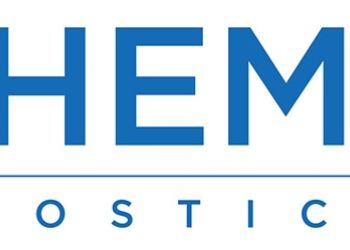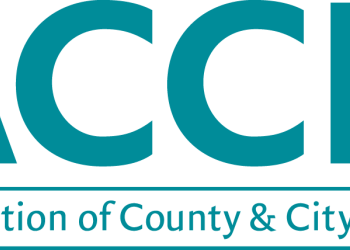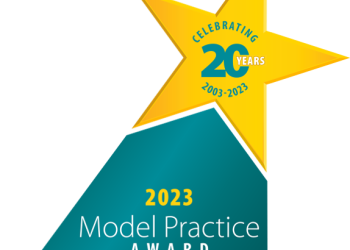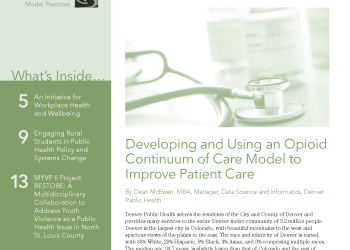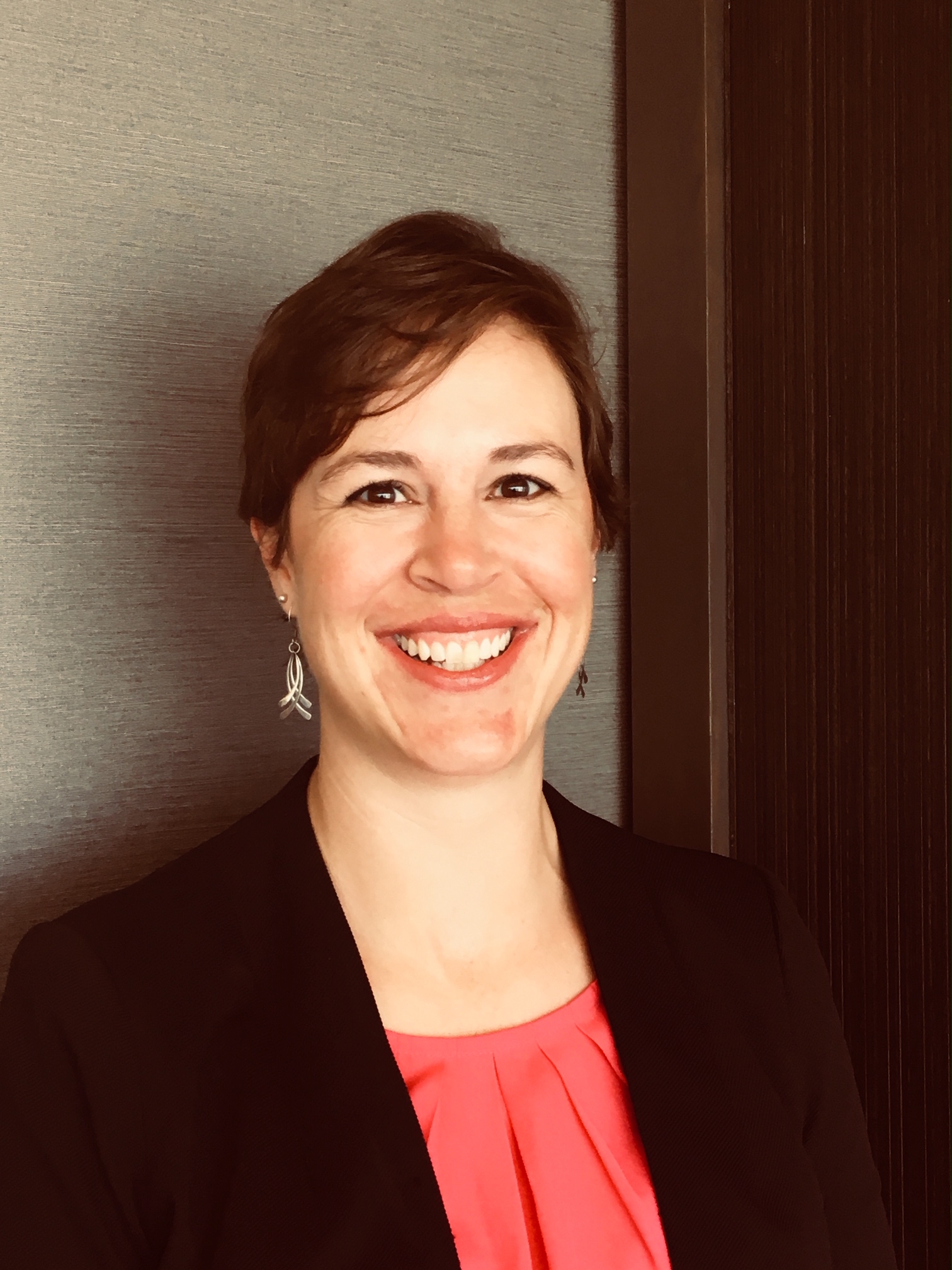 NACCHO’s Member Spotlight series features interviews with local health department leaders and staff about their careers in public health. This interview features Emily Brown, MPH, CPH, Health Director for the Rio Grande County Public Health in Colorado. Below she highlights the importance of rural health being represented in all levels of government and shares how her health department is addressing inequities in health as they relate to poverty.
NACCHO’s Member Spotlight series features interviews with local health department leaders and staff about their careers in public health. This interview features Emily Brown, MPH, CPH, Health Director for the Rio Grande County Public Health in Colorado. Below she highlights the importance of rural health being represented in all levels of government and shares how her health department is addressing inequities in health as they relate to poverty.
Tell us about your career path into public health.
I received my undergraduate degree in Communications from the University of Colorado in Boulder. During my last semester, I took a Communications and Health elective, which I sometimes credit for leading me to a career in public health or at least making me think about how important communications are in the health field.
After undergrad, I worked as an office manager and sometimes research assistant at the Rocky Mountain Prevention Research Center, a rural CDC-funded academic research center through the University of Colorado Anshutz Medical Campus.. The Center relies on community members to inform what research should be done and what benefits the community.
Working at the Center was my first real exposure to public health, and the experience offered me the opportunity to see how this field can make broad health improvements.
Some years later, I moved to Reno, Nevada, with my husband and was working at the University of Nevada, Reno, at their Conference Services Division. I was a classified employee there, so one of the benefits was free credits each semester at the university. I decided to take advantage of that offer and enroll in a graduate program.
Luckily, they had a Master’s in Public Health program. Due to some of my past experiences, but also because I enjoy how broad public health can be and how many different topic areas make up public health, I started pursuing my Master’s in Public Health. I was fortunate to have faculty there who found ways to support my interests in rural health, and I am especially grateful for an internship placement at the Nevada State Office of Rural Health. I was was able to get some good experience and background in that area.
One of my biggest roles after graduating with my MPH was to help support accreditation in Nevada. Public health accreditation was just beginning when I was starting to look for a career, and there was an opportunity to support the three local health authorities of Nevada as they began to pursue their recognition. One of these was Carson City Health and Human Services, which was a beta test site for the Public Health Accreditation Board. They were in on the ground level. It was great that we were learning at the same time and we could help support each other.
This role moved towards helping the Nevada Division of Public and Behavioral Health with accreditation. I was able to do a lot of work on health assessments, improvement plans, quality improvement, and generally learning about public health and educating others about accreditation.
Finally, through luck and timing, I ended up in my current role as Director of Rio Grande County Public Health. My family still lived in the county and an opportunity opened with the department right before my first child was born. It was one of those opportunities that I just had to jump on. So now I was able to be not only close to my parents, who have been great babysitters for both of my kids, but also jump into this leadership role where I have great opportunities to grow and give back. I’ve been able to be part of a great public health system in Colorado. That’s where I am today.
Tell us some of the highlights of your career since you’ve been working in public health, and why do you do the work that you do? What makes this work worthwhile?
I think the best part about the work is just the people that are in it. I don’t know how many times I’ve heard the line, “Steal shamelessly and give credit.” Public health professionals are always willing to share, and sometimes I think people new to the field are really surprised how easy that is. Whether you’re gathering data, found resources to share, or need time to help educate other, or help them follow up on a disease, there’s a lot of willingness to do that. I think we all know that the work is hard and that the issues are large. We do as much as we can to share our work and our experiences with others.
Because public health work can take so many different forms, you really get to see a wide range of individuals. You can work with people that are really “data geeks”, public health nurses, big systems thinkers, care coordinators, or researchers, and it’s just a great perspective to see all the different reasons people get into the work.
In general, these people are doing this work because they like the work, but they also care about the lives of the people being affected, which is important to remember when you’re feeling overwhelmed.
I’m never bored because there are always opportunities to interact with new people, especially at the county public health level. Just when you think you’re caught up on all your emails or you’re on top of something, you get a new disease case or a grant opportunity. It’s easy to go down a new path and learn something fresh. I appreciate the variety in this field.
What are some public health issues that affect your community the most, and what is your health department doing to address them?
The opioid epidemic hit our region hard. We have some of the highest rates of overdose deaths in our state, and those rates rival others nationwide.
Our department has been involved with several different efforts to help with that. We help support a neonatal substance exposure task force that is looking at how to change practices and educate the public so that fewer babies are born exposed to drugs. We partner with social services, our local hospitals, several doctors, and other public health agencies in our community.
We’ve developed a regional prevention coalition partnership to coordinate the prevention and response efforts around substance abuse. My department and our partners are disseminating the same messages and conducting trainings together to better leverage our resources.
Our San Luis Valley Area Health Education Center, or AHEC, has started the first rural harm reduction program needle exchange in Colorado. We have partnered with them to build support and are working to expand that program into our county as well.
I was honored to be part of a rural boot camp project that was led by the High Plains Research Network at the University of Colorado School of Medicine, which worked to increase the number of MAT providers in the area and reduce stigmas around opioid use disorder.
Poverty is also a major underlying concern for our region. Whether you’re looking at resources for opioid use disorder recovery, who has experienced tuberculosis, which youth are abusing substances, or how adults manage diabetes, poverty greatly effects health disparities in our area.
There are six counties in this region of Southern Colorado that cover an area about the size of Connecticut, but we only have 46,000 people in this area. It’s a very rural area. Together, our six health departments, also known as the San Luis Valley Public Health Partnership, meet regularly to share services and ideas.
For our current health improvement plan process, we’ve decided that one of our main priorities is health equity. Over the next five years, we plan to educate ourselves, our staff, and then the community about how inequities influence health and how much of this is related to poverty. We aim to make changes or influence changes that can help with some of those systems.
What is the biggest change you’ve seen in this field since you’ve started working in public health?
It’s hard when you’re in the trenches to get that outside perspective, but I do feel public health is becoming much more recognized. More often I hear about undergraduate, master’s, and doctorate-level degrees that are available at more universities or available online or that you can take coursework in public health.
Technology has really helped spread information about our data and research in ways that we just couldn’t before. However, I do think there’s been some “not-so-positive” technological advances that haven’t worked in our favor.
We’re seeing this huge rise in vaccine preventable diseases right now in the country, in some ways because we’ve done our work so well in the past. Now people are forgetting how important vaccines are.
Clean water and healthy food are the basic foundations of public health, but because we’re underfunded, we’re seeing more foodborne illness outbreaks and unsafe drinking water. The downside of technology is how quickly misinformation can get through social media or how much security we need to protect health data because of hackers.
How are you positioning yourself or your health department for the feature?
One of the big issues that I’ve been spending a lot of time thinking about is how to provide equity across health departments and communities. My health department has seven staff and our county has less than 12,000 people; we are in a very rural area. I see rural health departments in Colorado and across the nation who really lack fiscal and human resources, and often some of the issues or needs of rural areas aren’t always well represented in the media or sometimes even in their own legislature.
I’ve thought about how we can better represent ourselves and better share our means, but in general, the model we used to fund local and state public health across the country is just not a good model. We need to make sure we’re making decisions based on data and community need versus just what grants and what funding is out there.
As a local public health agency, we are uniquely positioned to be that community partner that’s examining population and data, and that’s looking at being that community-wide convener and visionary, but we need to have the resources to support this work.
I’m working to sustainably grow our local health department, both in structure and providing staff education to take advantage of opportunities that can help our region to better use the resources we have.
I’m also trying to be a strong voice for the needs of small and rural health agencies, especially when so many of the people in these agencies are just trying to get work done. Getting to the level of talking about it is not always easy.
NACCHO and our state member association, the Colorado Association of Local Public Health Officials, have really been a central connection for me in learning how to support the vision of what the local public health experts need.
How long have you been a member of NACCHO, and what value do you find in belonging to the organization?
I’ve only officially been a member of NACCHO for the time that I’ve been in my current role, but I have benefited from NACCHO’s work for much longer. Resources like the Mobilizing for Action through Planning and Partnership model guided my work when I was working for the health departments on accreditation and doing health assessments. I’ve been able to use many resources like that.
One of the biggest values I see from NACCHO is the legislative work done in Washington D.C. Since we have so many local health departments across the nation, just having the ability to unite our voices, to support policies and funding is huge. That’s key to continued success at the local level, and I really appreciate having these digestible briefs and communication materials that help summarize the super-complicated world of national politics. These resources help us figure out where we can advocate for something coming up or where we can take an opportunity or take information back down to the local level.
When you are away from work, what do you like to do in your free time?
The weather has been pretty nice here lately, and I am starting to get pretty antsy to get outside to plant vegetables or flowers. But in our area, we’re at about 8,000 feet, and our last freeze date could be as late as June 10th. About three years ago, my husband and I bought 40 cows. They’re starting to have their babies, so it’s a process of making sure they’re doing all right. In a few months, we’ll brand them and give them their vaccines.
Along with the cattle, my husband helps my parents with the potato and barley farm. My husband gets to do most of the hard work, but I really enjoy it when I can be more involved to go brand the cows or help provide company on the tractors.
We have a five- and a three-year-old son and daughter. Most of my free time is spent either mitigating breakdowns and cleaning up messes or really enjoying participating in the adventures they have.
For more interviews in the series, visit NACCHO Voice Member Spotlight.
